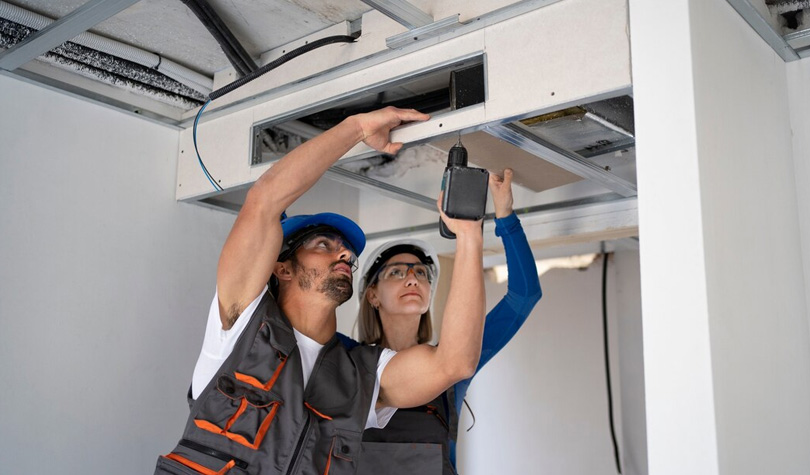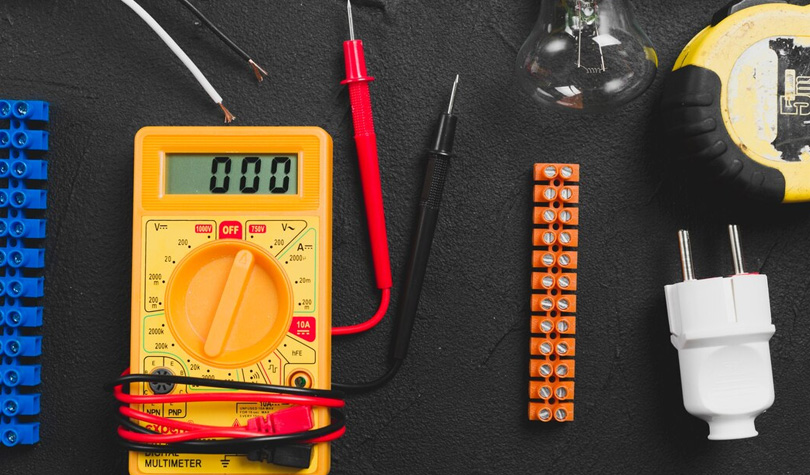Troubleshooting HVAC (heating, ventilation, and air conditioning) problems can be a time-consuming task. Professional HVAC technicians are savvy in revising your indoor air quality and overall temperature levels. They help install the HVAC system in your residence, and after the installation, provide guidelines in the event of a malfunction.

Image Source: freepik.com/freepik
In this article, we will make you aware of common HVAC problems and give you a manual on how you can resolve these problems.
1. Get Your Tools Ready
Prior to the actual course of troubleshooting, make sure that you are all geared up. Following are the tools that you will need to sort out your HVAC system:
• Multimeter
A multimeter is a device that measures amperage, resistance, voltage, and other electrical properties. HVAC systems are packed with electrical components that you must be careful of. By using a multimeter, you can avoid electrocuting yourself and get the job done. The electrical components include capacitors, motors, and wires.
Image Source: freepik.com/freepik
Technicians recommend using a multimeter to check the polarity of the circuits and connections in your HVAC system. Altogether, a multimeter helps you identify short circuits and overloads, enabling you to prevent malfunction with ease.
• Screwdriver
Heard that one before, right? It is a hand tool for driving screws; has a tip that fits into the head of a screw. You can use a screwdriver to tighten, loosen, and remove screws that hold the parts of your HVAC system together. Your system has access panels that you need to open or close with the help of a screwdriver.
Image Source: freepik.com/freepik
All in all, a screwdriver adjusts and replaces the worn-out parts of your HVAC system, allowing you to substitute them with newer ones.
• Flashlight
A flashlight is a small portable battery-powered electric lamp. Use your flashlight to cast light on the hidden areas of your HVAC system. That way, you can discover any dirt, debris, clog, or leak in your system. Avail this chance to clean the soiled parts of your HVAC system to improve its airflow and efficiency.
Image Source: freepik.com/macrovector
2. Check The Thermostat
A thermostat is an automated regulator that regulates the temperature. It starts the heat supply when needed, and stops it when the need is fulfilled. As you may guess, a thermostat is a vital part of your HVAC system. A thermostat typically has three options, namely heat, cool, and fan. It is the correct mode of a thermostat, so ensure that this mode remains constant.
If your thermostat is not working properly, change its batteries and try to patch up damaged wires. In case it does not function, you may want to buy a new thermostat.
3. Fix The Leakage
One of the most common HVAC issues is water leakage. This scenario requires you to look for cracks, clogs, and ice buildup in the drain pan, drain line, and evaporator coil. You should not let the leakage remain unattended for too long because it will ultimately disturb the cooling effect of your HVAC system.
There is a great likelihood that the trouble is with the refrigerant. If so, contact your technicians as refrigerants are dangerous. The leakage of the HVAC system is among the major HVAC warning signs.
In Closing
All things considered, troubleshooting common HVAC conditions is not that hard. As far as there are concerns about thermostats, specks of dirt, and leakages, you can restore your HVAC system. However, if your system is faulty due to refrigerant issues, you had better reach out to your technician.





